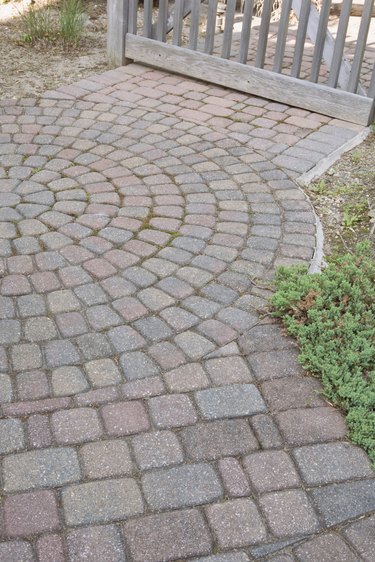Things You'll Need
Dry, stiff-bristled brush
Sponge
Garden sprayer
White vinegar
Paper towels
Masonry cleaning solution

All patios are vulnerable to calcium deposits from efflorescence and hard water. Efflorescence is common with curing concrete patios and occurs when moisture extracts calcium from the concrete, leaving dissolved calcium deposits on patio surfaces. Brick, concrete, and virtually any patio surface may acquire calcium deposits from hard water, which emits from many sprinklers and garden hoses. Although calcium deposits don't harm patios, the chalky stains mar patio surfaces' aesthetic appeal. Remove calcium deposits from patios using basic supplies.
Step 1
Scrub light calcium deposits off the patio using a dry, stiff-bristled brush. Loosen as much powdery buildup as possible.
Video of the Day
Step 2
Moisten a sponge with water. Blot the loosened calcium deposits off the patio's surface with the sponge.
Step 3
Inspect the patio for stubborn calcium deposits. Fill a garden sprayer with white vinegar, and then douse the remaining powdery buildup with the vinegar.
Step 4
Scrub the patio with the brush, loosening the remaining powdery deposits.
Step 5
Moisten the sponge with fresh water. Blot the remaining loosened deposits off the patio's surface.
Step 6
Blot all moisture off the patio using paper towels. Leaving any moisture on the patio prompts fresh calcium deposits.
Tip
For extremely stubborn calcium deposits, substitute a masonry cleaning solution for white vinegar.
Warning
Metal brushes may damage patio surfaces.
Rinsing the patio with excess water drives more moisture into the patio’s masonry, causing more calcium deposits.
Vinegar damages stone patio surfaces.
Video of the Day